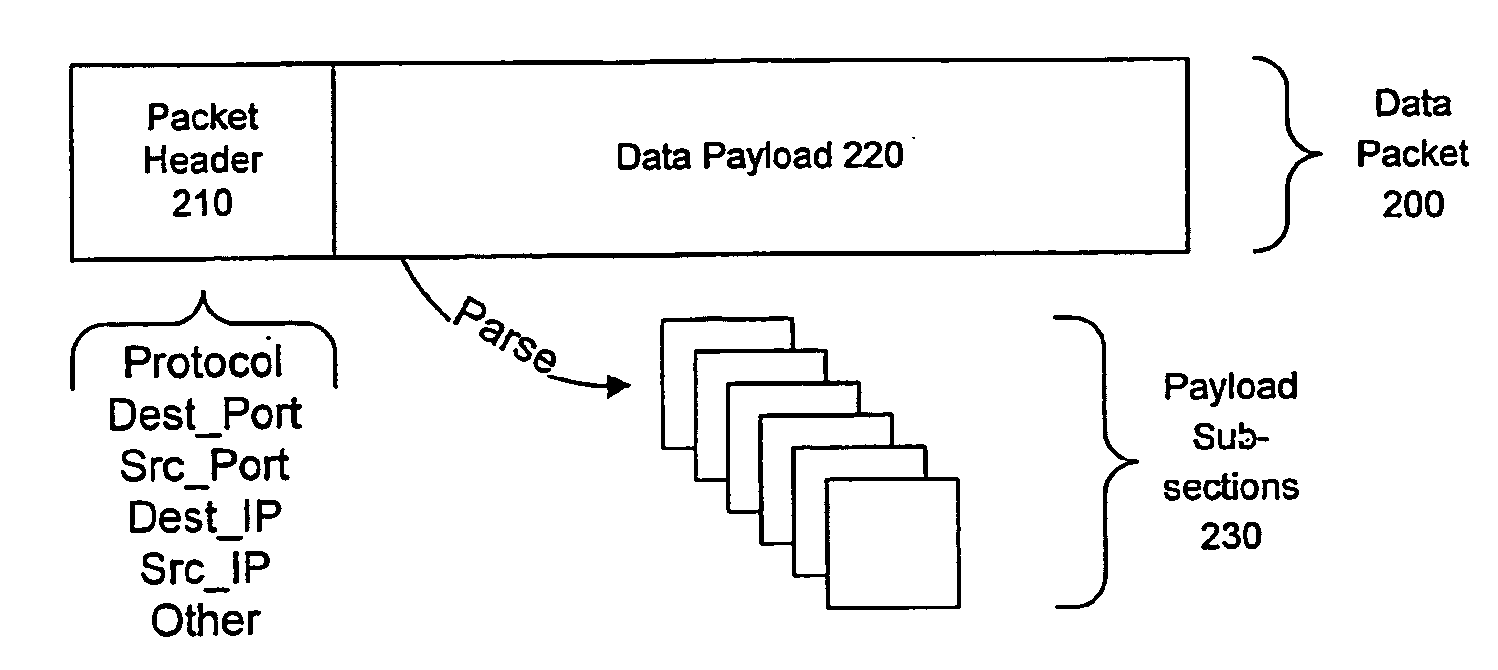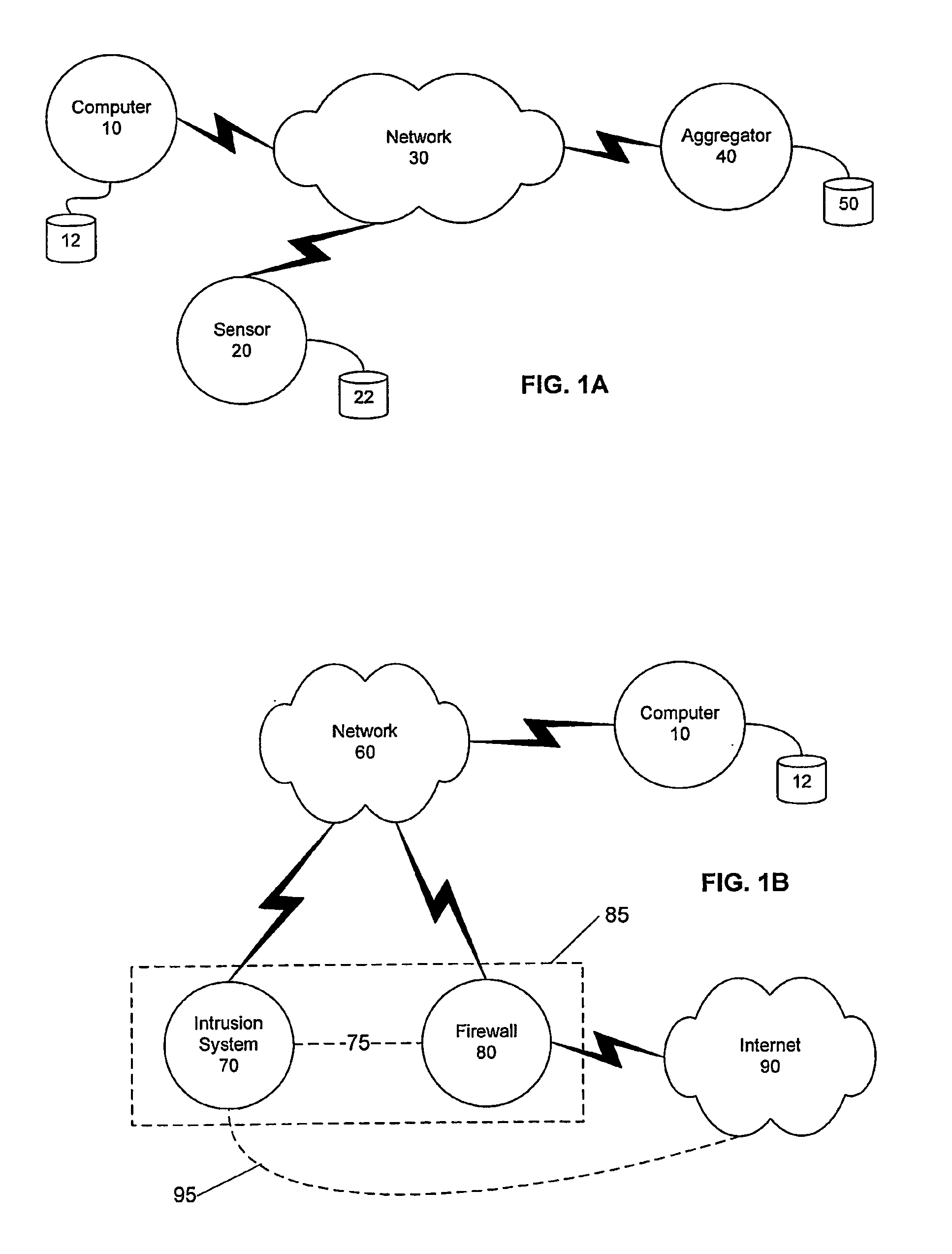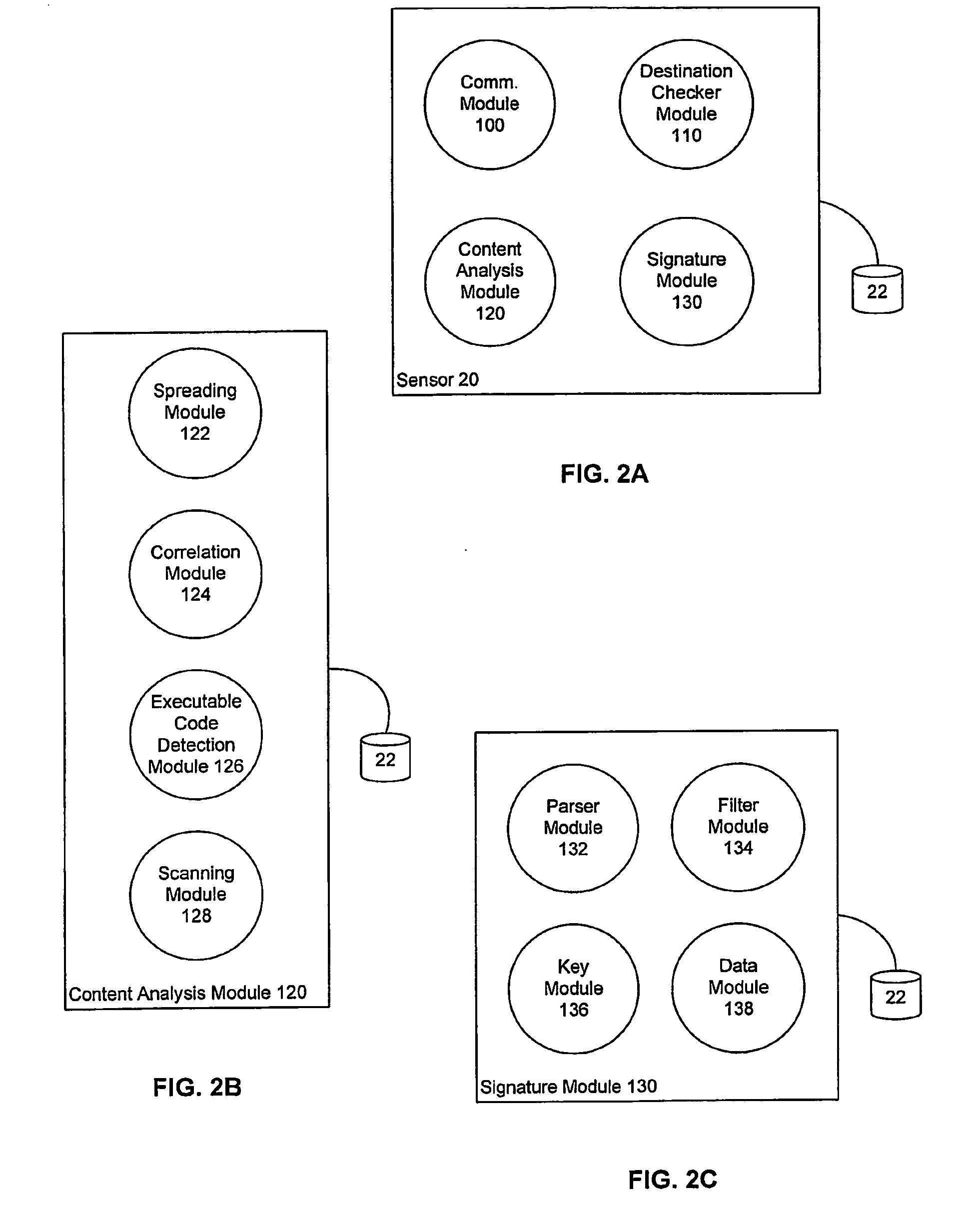Detecting Public Network Attacks Using Signatures and Fast Content Analysis
a public network and content analysis technology, applied in the field of network security, can solve problems such as worms that can do specific damage, do attacks, and spam unsolicited network messages, and achieve the effect of reducing the propagation of worms and increasing the throughput of network traffi
- Summary
- Abstract
- Description
- Claims
- Application Information
AI Technical Summary
Problems solved by technology
Method used
Image
Examples
Embodiment Construction
[0031]Certain embodiments as disclosed herein provide for systems and methods for identifying an invariant string or repeated content to serve as a signature for a network attack such as a worm or virus. For example, one method and system as disclosed herein allows for a firewall or other sensor unit to examine packets and optimally filter those packets so that invariant strings within or across packets are identified and tracked. When the frequency of occurrence of a particular invariant string reaches a predetermined threshold and the number of unique source addresses and unique destination addresses also reach a predetermined threshold, the particular invariant string is reported as a signature for a suspected worm. For ease of description, the example embodiments described below refer to worms and viruses. However, the described systems and methods also apply to other network attacks and the invention is not limited to worms and viruses.
[0032]After reading this description it wi...
PUM
 Login to View More
Login to View More Abstract
Description
Claims
Application Information
 Login to View More
Login to View More - R&D
- Intellectual Property
- Life Sciences
- Materials
- Tech Scout
- Unparalleled Data Quality
- Higher Quality Content
- 60% Fewer Hallucinations
Browse by: Latest US Patents, China's latest patents, Technical Efficacy Thesaurus, Application Domain, Technology Topic, Popular Technical Reports.
© 2025 PatSnap. All rights reserved.Legal|Privacy policy|Modern Slavery Act Transparency Statement|Sitemap|About US| Contact US: help@patsnap.com



